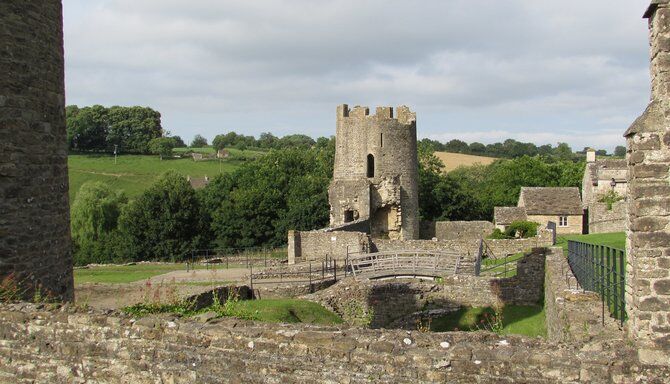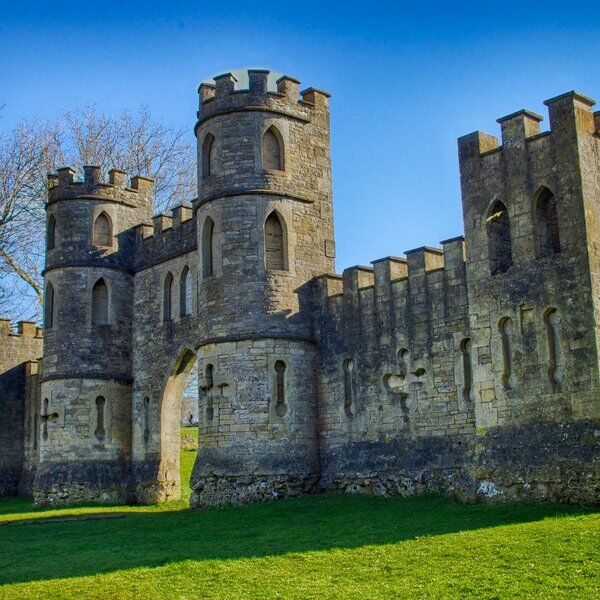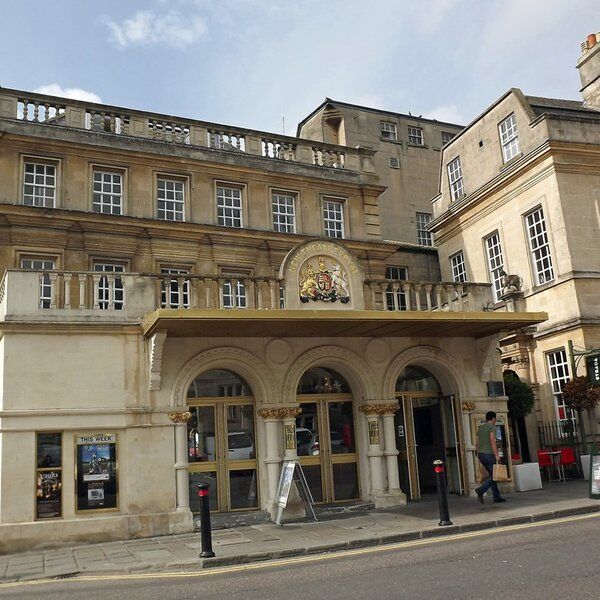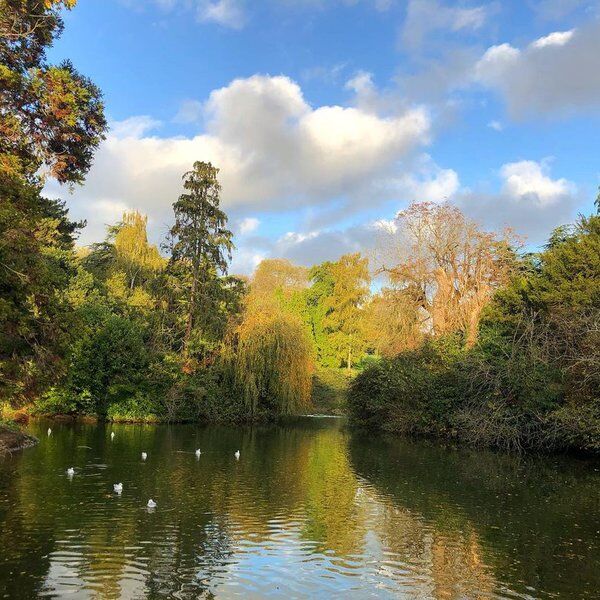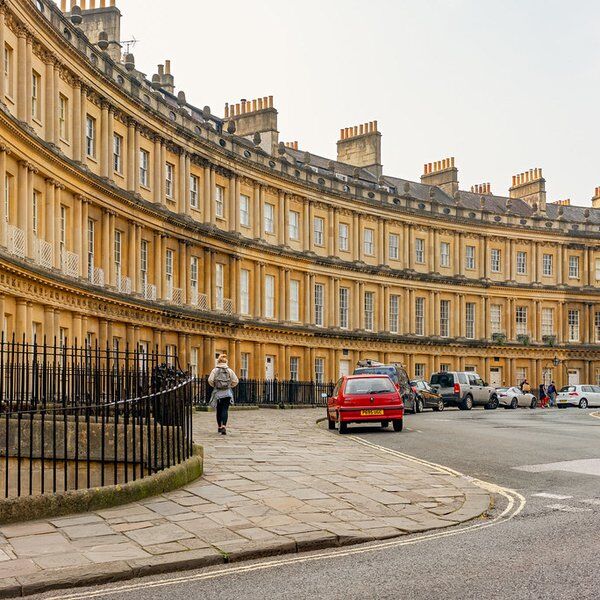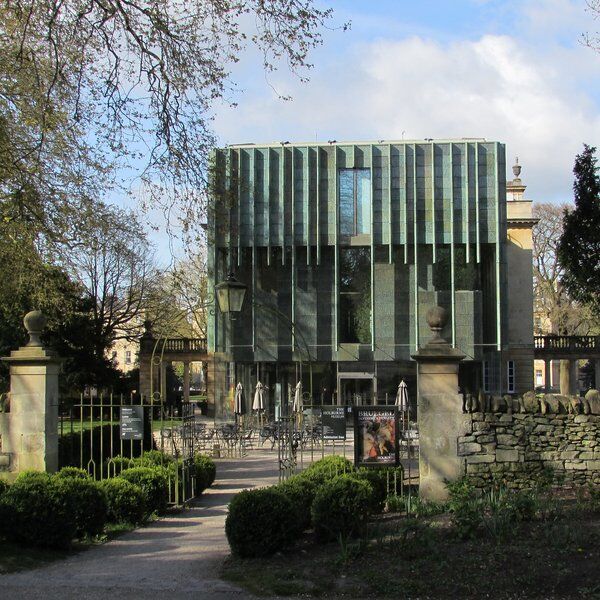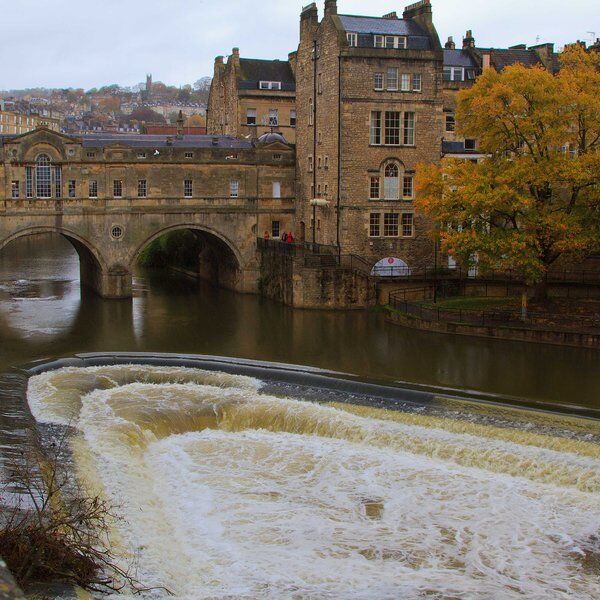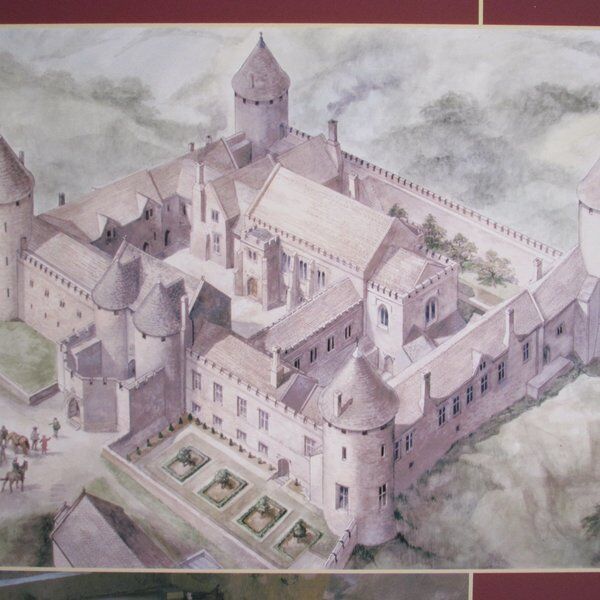
The Callous And Illegal Beginnings Of Farleigh Hungerford Castle
The castle was built between 1377-83 to serve as the main home of Sir Thomas Hungerford. Thomas had made his fortune as the first known Speaker of the House of Commons and Chief Steward to John of Gaunt, father of Henry IV.
He used a manor, which had been on the land when he had first bought it, as the central hub of the castle. He then added a chapel, a deer park and crenellated walls. This last step was an offence however, Thomas having failed to apply for a 'license to crenellate'- a requirement at the time for those wishing to fortify their property. As a result, he had to seek royal pardon in 1383.
What he didn't have to apologise for however, was the demolition of half the village of Wittenham to make way for his deer park. He wanted venison and he wanted to hunt, and if it took the destruction of a local community to do this then so be it! Wittenham was damaged beyond repair and later became deserted.

Farleigh Hungerford Castle Grows
Upon Thomas' death the castle passed to his son Walter (the first of many Walter's in this story). Walter followed in his father's footsteps, becoming Speaker and then Treasurer. He made most of his money however by ransoming French gentlemen who had been captured during the Hundred Years War. Noble families would pay a fortune to have their relations returned to them, and this made men on both sides of the war, including Walter, very rich.
Now wealthier than ever, Walter expanded the original castle, enclosing its chapel and inner court within new outer walls. On top of this he bought a total of 110 manors and estates up and down the country.
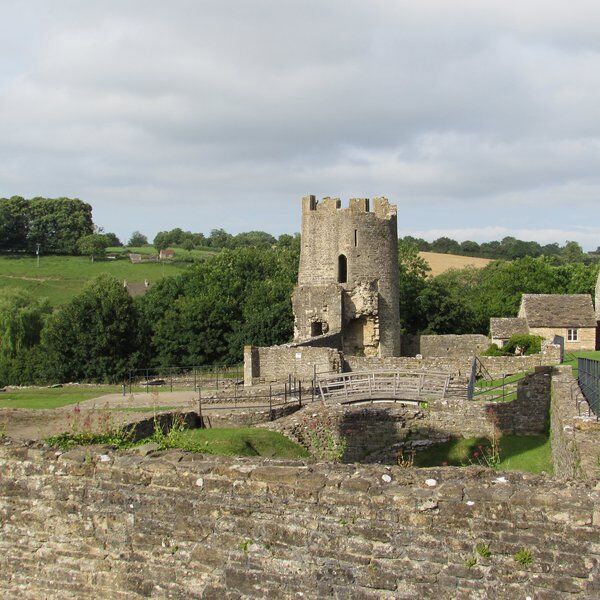
Farleigh Hungerford Castle Is Seized By The Crown
Towards the end of the Hundred Years War, one of Walter's grandsons, Robert, was captured during the Battle of Castillon. As a result, the Hungerford's were given a taste of their own medicine. They were forced to pay £10,000 to have the boy restored to them in one piece, financially crippling the family.
From here things only got worse. When Robert finally returned to England, in 1459, the War of Roses between the English houses of Lancaster and York was already in full flow. Robert sided with the losing Lancastrian army. At the end of the war he was left with little choice but to flee. The castle was taken by the new king Edward IV. Robert evaded capture for several years but was eventually caught and executed in 1464.
Farleigh Hungerford Castle Is Returned To Its Original Owners
When Edward IV's brother Richard III came to the English throne another of Walter's grandsons, also Walter, revolted. He was imprisoned in the Tower of London but escaped during Henry Tudor's invasion. He joined Henry's Lancastrian army and when Henry took the throne, in 1486, the castle was restored to Walter as a reward for his service.

Murder At Farleigh Hungerford Castle
The castle later passed to Walter's son Edward and then Edward's wife Agnes. A grim truth soon came to light however and Agnes lost both the castle and her life.
She had already been married when she met Edward, but this didn't stop the two of them hitting it off. Increasingly infatuated with him- or maybe his money- Agnes made plans to do away with her husband so that she could remarry. Under her command her servants strangled the man and later burned his body.
When the truth came out Agnes and her servants were sentenced to death and the castle was inherited by Edward's son Walter. But the scandal didn't stop there.

The Imprisoned Wife Of Farleigh Hungerford Castle
Walter was a client of Thomas Cromwell, chief minister of Henry VIII. This gave him power and influence, but his relationship with Cromwell came under threat when his wife's father became a political liability. Enraged, he imprisoned her in one of the castle towers.
Unfortunately for Walter, Cromwell himself fell out of favour with the king when the king broke from the Roman Catholic church. Cromwell was found guilty of treason, witchcraft and homosexuality and he and his supporters were executed, Walter amongst them.
When Walter's wife was discovered in the tower she revealed that he had been starving her and trying to poison her. The king showed her little sympathy. She was freed but he took the castle for himself.
Farleigh Hungerford Castle Is Once Again Reclaimed
Walter's son, another Walter, bought the castle back in 1554. Ideally, he would have left it to his son, but trouble between him and his wife prevented this from happening. She was catholic and, during the rise of protestantism, their marriage had collapsed and she fled into exile. The only son they had had together died young.

The Civil War And Farleigh Hungerford Castle
The castle passed to Walter's great nephew Edward. During the English Civil War, Edward fought for the Roundheads, leading the forces of Wiltshire. He had competed for this honour with Sir Edward Bayntun before eventually winning out. The Bayntun family would have the last laugh however, as we will later see.
Edward had a military career mired by mediocrity. The castle was seized by a Royalist force lead by his half-brother in 1643, but he retook it in 1645 and, thanks to it having been kept in the family throughout, it remained undamaged.
Upon Edward's death it passed to another of his half-brothers, Anthony.
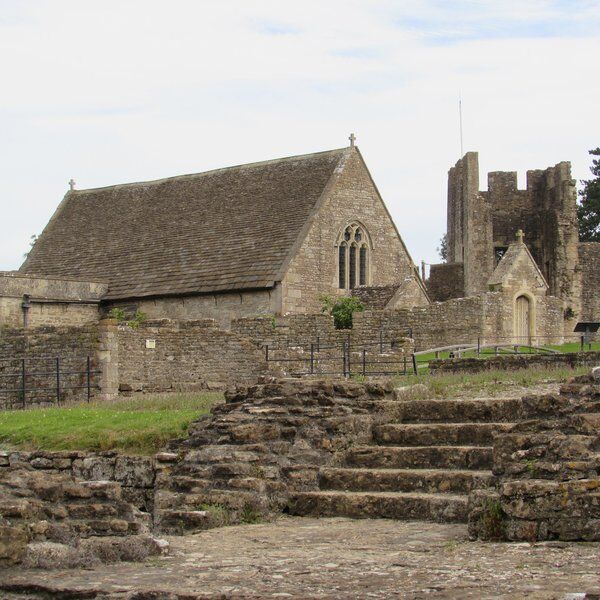
Farleigh Hungerford Castle During The Stuart Invasion
When Anthony died the castle was inherited by his son Edward. A wealthy and exuberant man, Edward gambled on exiled Charles II retaking the throne, gifting him a large sum of money. This paid off when Charles was eventually made king in 1660. Not all of Edward's bets went so well however.
He later fell out with the king and, bankrupted by gambling debts, he was forced to sell his entire estate. The castle was bought by none other than Sir Henry Bayntun, son of the aforementioned Edward.
Farleigh Hungerford Castle Is Stripped For Salvage
In 1702, Bayntun sold the castle to the Houlton family and from here it went into decline. The Houlton's took apart its walls and stripped it for salvage. Upon realising that some of its contents were of interest to antiquarians, they set up a museum of curiosities in the chapel and charged guests entry.
Eventually, the priest's house was the only bit left inhabitable. The castle's foundations were excavated and turned into a tourist attraction. This attracted many visitors including, in 1846, Napoleon III of France.

Farleigh Hungerford Castle Today
The castle passed between many hands before eventually being taken over by English Heritage in 1983. Today it is mostly ruins, but the priest's house survives and the Eastern gatehouse has been restored. It has retained several objects of interest, including some 17th century lead coffins and some medieval murals that have weathered well enough to still be visible.
Visiting Farleigh Hungerford Castle
Farleigh Hungerford Castle Opening Hours:
Mon-Sun: 10am-5pm
Farleigh Hungerford Castle Prices:
Adults: £6.00
Children (5-17): £3.60
Students and over 65s: £5.30
Families (2 adults, 3 children): £15.60
Families (1 adult, 3 children): £9.60
English Heritage Members: Free
Tickets can be booked in advance here.
Interested in finding more places like this? Try one of our Treasure Hunts In Bath - untangle cryptic clues as a team, as you are taken on a journey to the most unique, unusual and bizarre corners of England.
Want to read more about castles in the UK and beyond? Check out our articles on Edinburgh's Lauriston Castle, Dublin's Drimnagh Castle and New York's Castle Clinton.
